The overwhelming amount of digital images flooding art and the world the last decade or so almost erases the memories of the 70s Polaroid era. The whole act of taking a Polaroid photo was a delicious ritual – unfolding the hulking camera, loading the big film cartridge, aiming just right, the big CLICK - then the raw vulnerable film sliding out.
After grabbing the piece by the edges and waving it to develop – something that was useless but felt like a really important part of the process – there was the anticipation of what it would look like. No filters, no special effects, but Polaroids had a particular look and color palette about them, and the longer bottom white frame was perfect for labeling.
The drawback was the price and the small size, though Polaroid did develop a larger size camera that it invited certain artists such as William Wegman and Chuck Close to use at their studios in the late 1970s and early 80s.
.
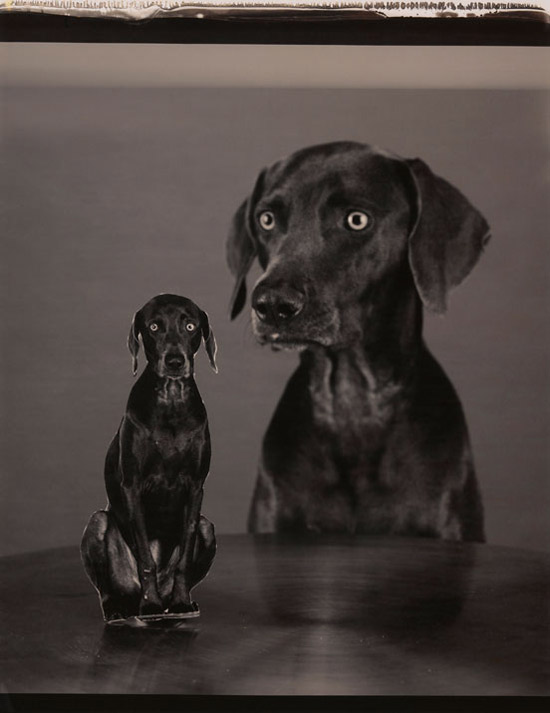
"Splitting Image" by William Wegman.
For more experimental artists this was a whole new world after endless decades of fussing with film. A retro exhibition at the Norton Museum of Art in West Palm Beach, FL brings back that innocent time by presenting ground-breaking Polaroid pictures made by 40 artists spanning from the initial release of the SX-70 camera in 1972 until the present.
"The Polaroid Years: Instant Photography and Experimentation" focuses on experimentation by the exhibiting artists and examines how the invention of instant photography has influenced contemporary work. Ironically, the more popular filters and affects in digital cameras and phone cameras today seem to mimic the Polaroid look.
The photographs in the show represent a wide range of approaches and sensibilities and include such pioneers of instant photography as Ansel Adams, Ellen Carey, Chuck Close, Walker Evans, David Hockney, Dash Snow, Joyce Neimanas, Andy Warhol, and William Wegman as well as a new generation of artists including Anne Collier, Bryan Graf, and Grant Worth.
The entrance to the exhibition contains a glass box with three Polaroid cameras, one of which was a more “deluxe” model with leather inserts. There is a fun period film running on a monitor that explains how to use this newfangled device.
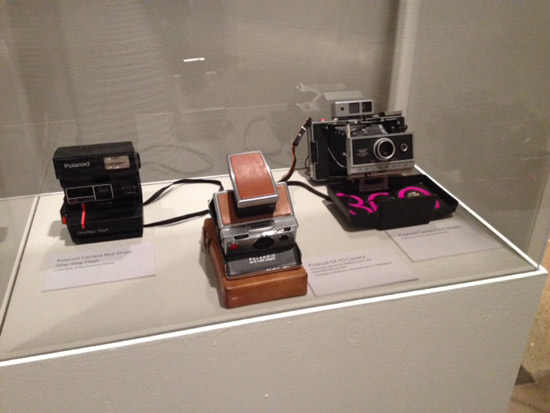
Vintage Polaroids on Display.
Heading into the show, many viewers pulled out their glasses to better see the small work. A contrast in styles and sensibilities is immediately shown in work by Ansel Adams – the iconic landscape photographer who embraced the little Polaroid format late in his career - and the wildly rebellious Dash Snow, who died at the age of 27, who dared his viewers to accept sex and drug binges as fine art.
Adams has some beautiful close-ups of rocks and natural formations while Snow’s work reflects some of the edge he lived: messy and candid images of graffiti and stoned friends.

"Rusted Blue Metal" by Ansel Adams.

"Dead Cops" by Dash Snow. Polaroid.
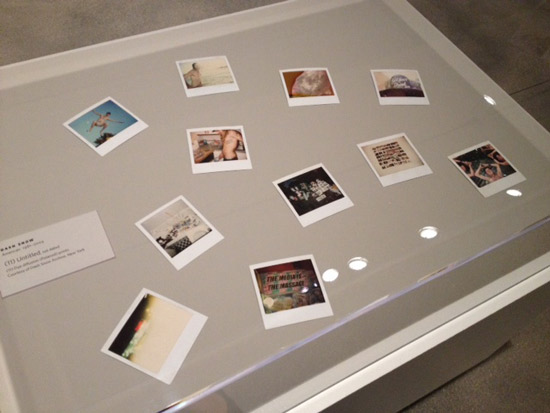
Polaroid display by Dash Snow.
Going beyond the limitations of the small size, artists like Matthew Brandt used the squares like pixels, taking hundreds of them in solid colors and arranging them into large-scale works that melded into a single image when viewed from a distance. The Brandt work here – of a man using a Polaroid that appeared on the cover of Time Magazine – is best viewed through a phone camera, a playful play of generational image use.
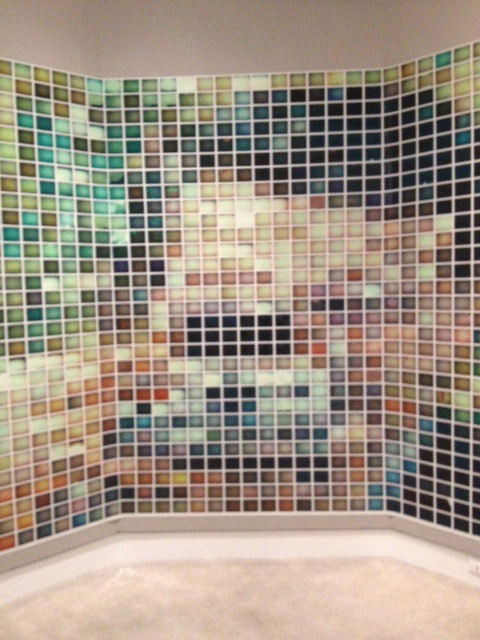
"Edwin Land Holding Camera" by Matthew Brandt. Polaroids.

Detail of "Edwin Land Holding Camera" by Matthew Brandt.
Other artists began using the small size as a collage base, taking multiple shots to haphazardly piece together to form an off kilter, but recognizable, image as in the work of Joyce Neimanas.
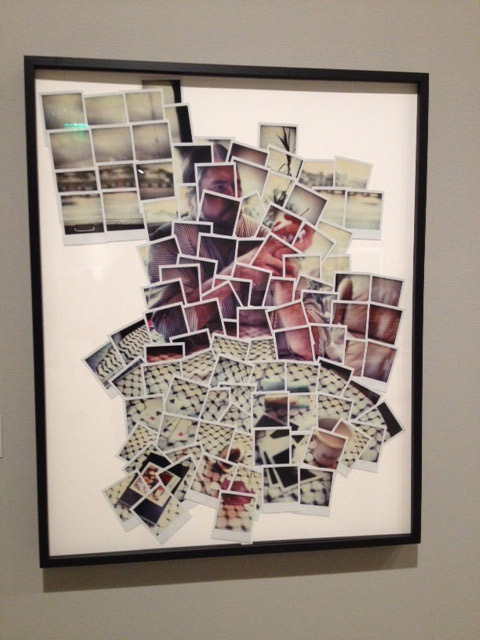
"R at Table 9" by Joyce Neimanas.
Some work included here is based solely on the strange streaky colors that appeared during the development process – a ghostly range of blues and grays that shifted and pulsed as a picture bled through.
When Polaroid bowed to the digital camera evolution, they stopped making the cameras in 2007 and stopped selling film in 2009. A generation of users revolted, and in March 2010, a group called The Impossible Project took over the old factory in The Netherlands to make and distribute instant film materials for vintage Polaroid cameras.
The impressive array of work in the Norton show makes an instant case for why this format is still important.
BASIC FACTS: "The Polaroid Years: Instant Photography and Experimentation" runs from Dec. 19, 2013 to March 23, 2014. The Norton Museum of Art is located at 1451 S. Olive Avenue, West Palm Beach, FL. www.norton.org.
HAMPTONS INSIDER: Chuck Close, Andy Warhol and William Wegman have connections to the Hamptons.
Chuck Close formerly lived and worked in the Hamptons. Close had a solo show at Guild Hall in East Hampton, NY. His photographs will be the subject of a solo show at the Parrish Art Museum from April 18, 2015 through July 12, 2015. Wegman exhibited video works at Guild Hall in 2012 in the group show "Escape: Video Art." He lives on Long Island, NY.
